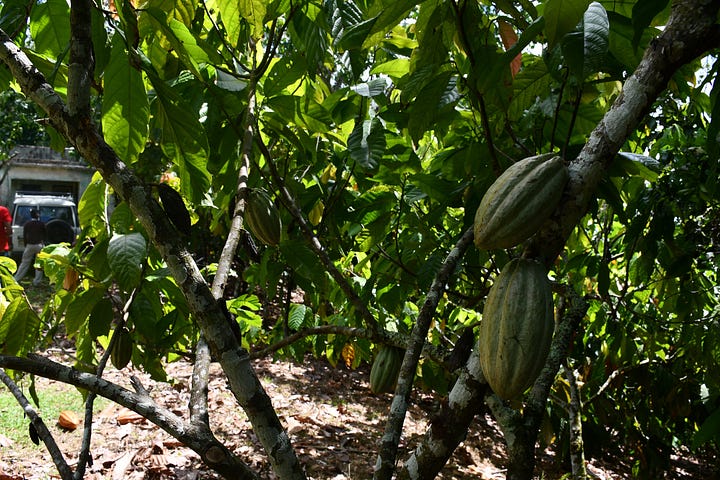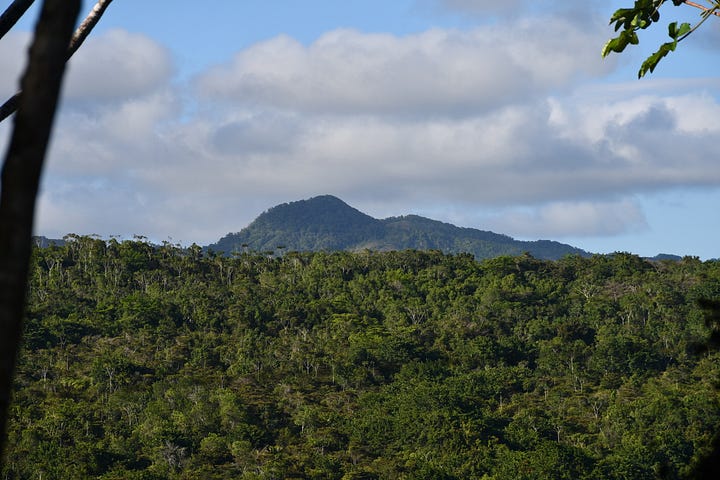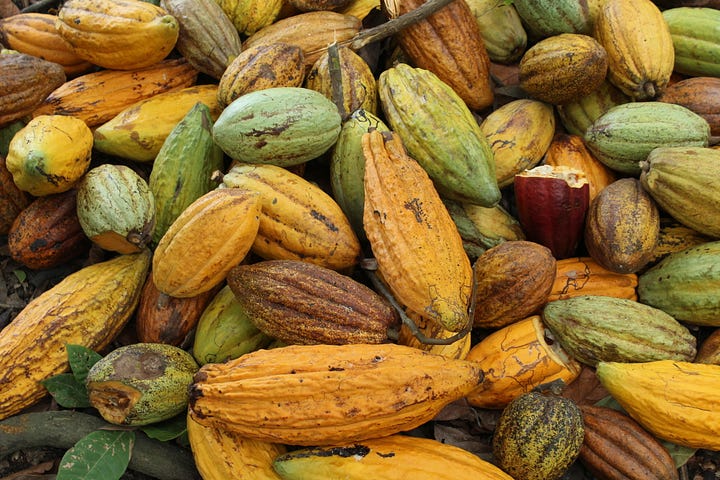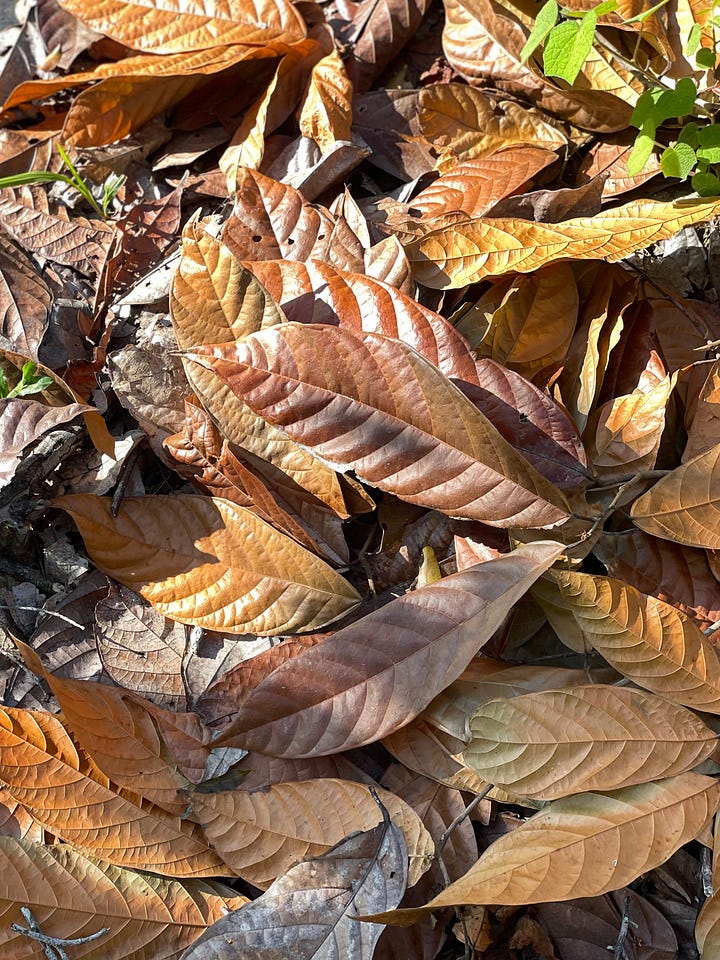Food, forests and the future of farming
We need diverse and resilient food systems. We need diverse and resilient forest ecosystems too. And, we need both in equal measure.
For centuries we’ve been sacrificing our forests for the sake of our food. Today, just two-thirds of our forests remain standing.
Yet, for all this sacrifice, our food systems are far from robust or resilient. Crops are failing due to changing climates, soil degradation and pest and disease outbreaks. Farmers continue to struggle to make a living wage. And almost one in ten people do not get enough to eat.
Humanity needs diverse and resilient food systems. But we need diverse and resilient forest ecosystems too. And, we need both in equal measure.
So, can we have our forests and eat our food too?
Agriculture and deforestation: A brief history
Approximately 10,000 years ago, 6 billion hectares of the Earth's land surface was covered by forests. Today, this number is 4 billion hectares. To put that in perspective, the 2 billion hectares of forest we’ve destroyed is about the size of India and the Russian Federation combined.
But deforestation hasn’t been evenly distributed over this time. As you can see from the chart above, about 50% of this deforestation — or 1 billion hectares — has occurred in the last 124 years.
These figures are as startling as they are concerning.
Forests provide us with a swathe of ecosystem services — from ensuring water quality and cooling global temperatures to helping to prevent pandemics, slowing floods and advancing human healthcare.
Forests are home to more than 80% of all terrestrial species of animals, plants and insects. Approximately 1.6 billion people depend on forests for timber, food, fuel, jobs and shelter. And, forests are a net carbon sink, annually absorbing about 7.6 billion metric tonnes of carbon dioxide (or about 1.5 times the United States’ annual emissions).
We simply can’t afford to destroy our remaining forests.
So, what is driving deforestation?
If you’re picturing sprawling megacities, you’re not alone in assuming urbanisation is to blame. However, urban land accounts for just 1% of global habitable land. By contrast, almost half of the world’s habitable land is used for agriculture.
Humanity’s biggest footprint comes from what we eat, not where we live.
In the past 124 years, we’ve cleared 1 billion hectares to graze livestock and grow sugarcane, rice, wheat and soy and non-food crops such as cotton and hemp. However, just 50% of these crops are consumed by humans directly — with approximately 38% of our crops used to feed our livestock.
The rise of monoculture
Monoculture is an agricultural technique where one crop is planted in tight neat rows, in full sunlight, harvested, and then planted in the same area again. Since 1945, monoculture has become increasingly prevalent, and now supplies most of our food and non-food crops.
Monoculture has short-term advantages.
Monoculture allows farmers to use the same seed, pest control, automation and growing methods across their entire farm, which can reduce labour requirements and increase overall farm profitability. Specialising in one crop also enables farmers to strengthen their knowledge of one value chain and commercial market, including all its regulations and tariffs. And, importantly, government subsidies tend to favour monoculture systems.
But monoculture has severe, compounding, long-term consequences.
Growing a single crop increases the risk of disease and pest outbreaks, both because monocultures lack predator species and because there is simply more food for pests and insects. To combat this, farmers tend to increase their use of pesticides and herbicides, which can lead to a decline in soil organisms and soil fertility. Once soil declines, more fertiliser is needed, and a vicious downward spiral commences.


Soil degradation (and soil more generally) often gets overlooked, but it’s a serious problem.
“Scoop up a shovel-full of healthy soil, and you’ll likely be holding more living organisms than there are people on Earth. Like citizens of an underground city that never sleeps, tens of thousands of subterranean species of invertebrates, nematodes, bacteria and fungi are constantly filtering our water, recycling nutrients and helping to regulate the planet’s temperature,” write the Center for Biological Diversity’s Nathan Donley and Tari Gunstone.
“Soils are some of the most complex ecosystems on Earth, containing nearly a quarter of the planet’s biodiversity … But under fields covered in tightly knit rows of corn, soybeans, wheat and other monoculture crops, a toxic soup of insecticides, herbicides and fungicides is wreaking havoc.”
Agriculture isn’t the problem
Despite 124 years of rampant, agriculture-driven deforestation, it would be too simple, too reductionist, to villainise agriculture and call it a day. Because agriculture doesn’t have to evoke images of bare fields, neat rows, full sunlight and large tractors. Because monoculture isn’t the only agricultural technique with proven benefits. Because we don’t have to clear forests to access fertile land.
Put another way: the problem isn’t farming.
The problem is how we’ve come to farm — or, more accurately, how our perverse incentives and supply chains force farmers to adopt monoculture practices and prioritise short-term productivity over longer-term sustainability.
One solution, therefore, is reformed incentives, shorter supply chains, long-term thinking… and for some crops, an underrated Indigenous technique called agroforestry.
Agroforestry is the combination of agriculture and trees.
Practising agroforestry can mean growing shade-tolerant crops inside a forest, growing shade-tolerant crops alongside a forest edge, or planting shade-tolerant crops alongside an array of other plant species to mimic the structure of a forest.
All around the world, crops that once drove deforestation are now being planted in agroforests of all shapes and sizes. In tropical climates, for example, coffee, cacao, coconut, banana, cassava, yuca, beans, maize, sweet potato, squash, sesame, ginger and turmeric are being used in multi-layer agroforestry systems.

For crops that might not grow well in the shade, trees still have a role to play. In these contexts, it can mean alley cropping (planting trees and row crops side by side in strips) or planting native windbreaks or field borders. The benefits include habitat for insects and birds that prey on insect pests and the reduction of wind and water erosion.
Ranchers or farmers grazing livestock can beneficially utilise trees in their landscapes too. Silvopasture is a technique that sees trees and shrubs planted in pastures, and recent research demonstrates that many forage grasses grow as well or better under up to 50% shade as they do in an open pasture.
It’s necessary to say that agroforestry alone won’t fix our food systems — however, it is a key part of the systems change needed to secure diverse and resilient farms and forests.
Agroforestry is a recognition that trees belong on and benefit farms and a willingness to innovate and rethread agricultural and forestry expertise. And in a world of changing climates, declining soil health and degraded forests, agroforestry is back in favour as a sustainable solution for food and forests alike.




Ten agroforestry benefits
Agroforestry’s benefits can be grouped into three buckets: better for nature, better for farmers and increased climate resilience. We’ve included some of these benefits below, many of which are detailed in a recently published paper by Wedgetail’s Research Lead on cacao agroforestry systems in Ecuador.
Better for nature
Shade trees can support increased soil organic matter from leaf litter.
Deep root systems can prevent soil erosion, which improves water quality and infiltration and lessens the impacts of flooding.
Agroforestry systems are a more favourable environment for pollinators and for the natural enemies of pests.
Agroforestry systems are more biodiverse than monoculture farms, providing habitat for wildlife and buffering nearby forest ecosystems.
Better for farmers
Additional crops can be used as a food source or sold to mitigate some of the effects of another crop’s price volatility.
Trees and soil in agroforestry systems (and tropical agroforestry systems in particular) can sequester carbon.
Potential to access premium prices (such as selling cacao to craft chocolatiers) and new financial tools (such as biodiversity credits or forest stewardship payments).
There’s evidence that trees can remain productive for longer in agroforestry systems.1
Climate resilience
Crops are buffered from the damaging effects of wind, heat and heavy rains.
Agroforestry systems can provide increased resilience in the face of climate change by buffering temperatures.2
Despite these benefits, agroforestry is a way off being mainstream.
For agroforestry to be widely adopted, especially in tropical climates, farmers need to be financially supported in the transition, paid premium prices for their nature-positive crops, aided in accessing multiple markets, and rewarded (or at the very least, not penalised) for conserving or restoring forests for the benefit of all.
We also need more research and knowledge-sharing. There’s a widespread assumption that agroforestry systems produce fewer crops and this is a huge barrier to adoption — however, when all the crops grown in agroforests are considered, overall yield can actually be higher.
As the recent research in Ecuador found, agroforestry farms did not see a decrease in cacao yield for the producing trees on the plots or in the overall income levels per hectare once all crops were considered.




Food, farms, tomato, tomato
Governments spend approximately US$700 billion on agriculture subsidies every year. Of this, US$451 billion actively incentivises deforestation, fertiliser use, pesticide use, overfishing, overgrazing and pollution.
The basis of this misalignment is the idea that farms and forests are separate, that you farm over here, and forest over there, and never the twain shall meet.
But this isn’t how nature works.
Farms don’t just produce food — they positively or negatively impact water quality, soil quality, pollution, greenhouse gas emissions and pollinator health. Farms and forests might be housed in different government departments, but that doesn’t mean they aren’t forever entwined. After all, birds, bees, earthworms, beetles, fungi, wind, rivers and rainfall don’t adhere to fence lines.
This is why agroforestry is so exciting. It isn't merely a change in how we farm, but a shift in how we think about farms — from isolated islands to interconnected ecosystems.
Agroforestry is an acknowledgement that crops are still plants and livestock are still wildlife and should be treated as such. It’s a reimagining of the role farmers play in our systems. It’s a recognition that actions on one farm ripple beyond a fenceline. And it’s an acceptance that the Earth is one giant ecosystem and we need to design policies, practices, products and professions through a systems lens.
This article was written by: Bronte McHenry
And edited by: Julia West, Lisa Miller and Summer Allen
Wedgetail’s mission is to conserve and restore biodiversity through sustainable investment. We do this by providing financial capital — nature-linked loans, grants and equity investments — to organisations that put biodiversity at the heart of their business models.
If you’re on a nature-positive journey, please get in touch, as we’d love to support you.
Abou Rajab, 2016 as cited in Allen, et. al. 2024
Heming, 2022 as cited in Allen, et. al. 2024








I'm currently reading One Size Fits None by Stephanie Anderson--nothing on Agroforestry specifically (more focused on grasslands), but follows the same general principle. Really interesting.
Great post! Thanks for sharing. I really enjoyed reading it. I couldn't agree more with your points.
The joint IPBES-IPCC report had a nice summary of the need for agroforestry in finding biodiversity-climate win-wins. Point 14 in the summary: "Sustainable agricultural and forestry practices can improve adaptive capacity, enhance biodiversity, increase carbon storage in farmland and forest soils and vegetation, and reduce greenhouse gas emissions." I discuss this very briefly (but don't mention agroforestry explicitly) here: https://predirections.substack.com/p/the-search-for-win-win-biodiversity.